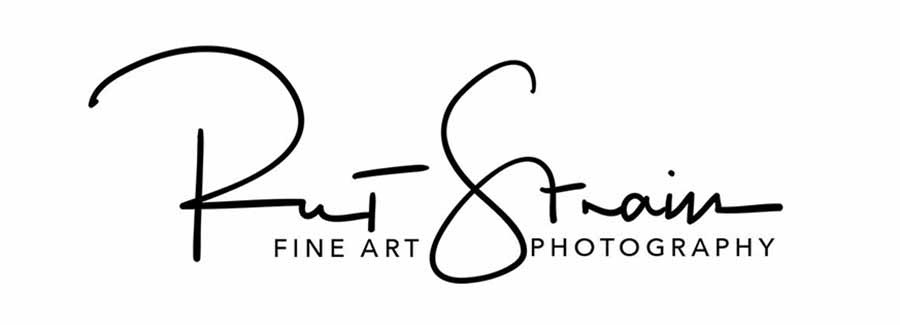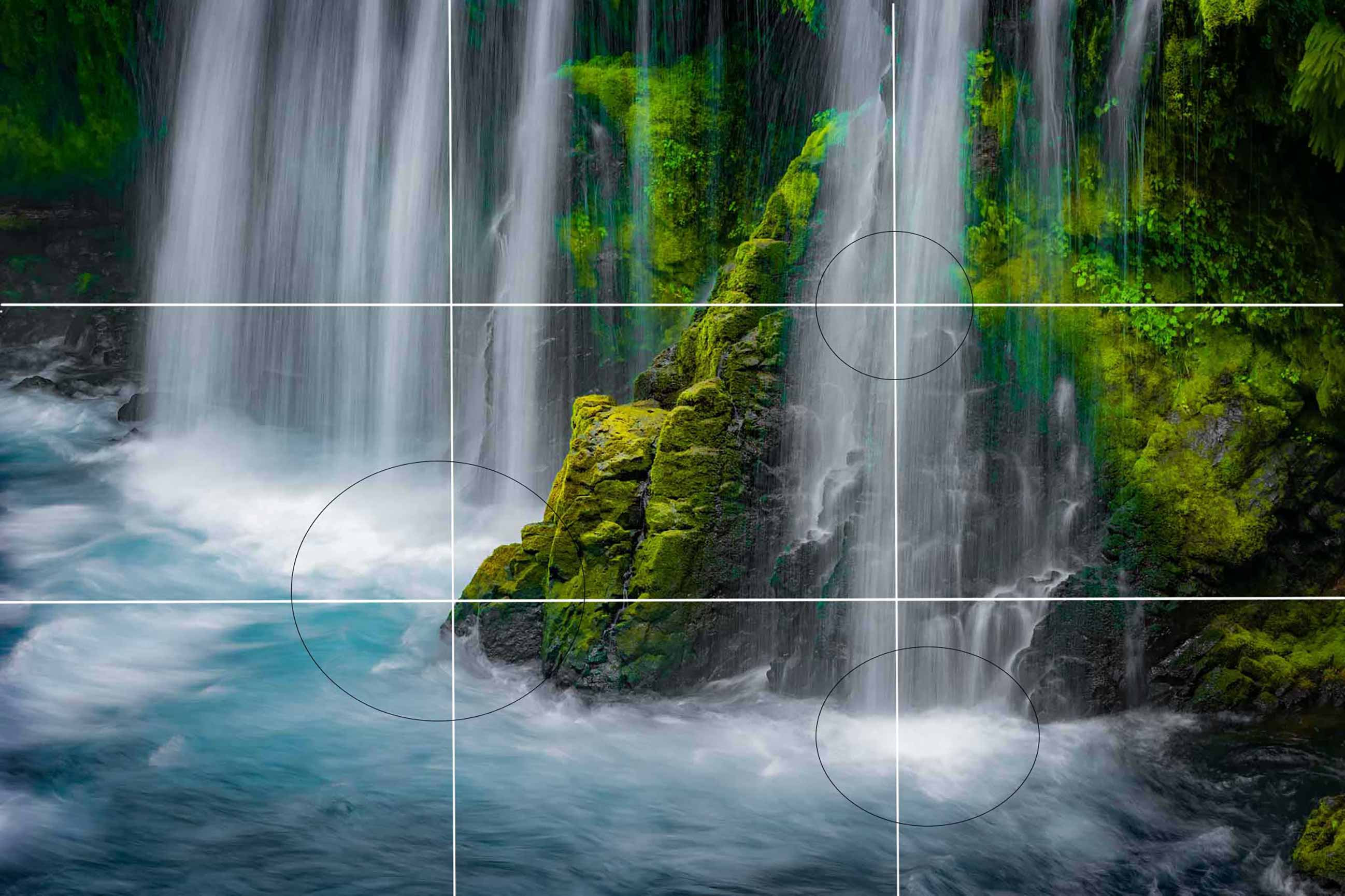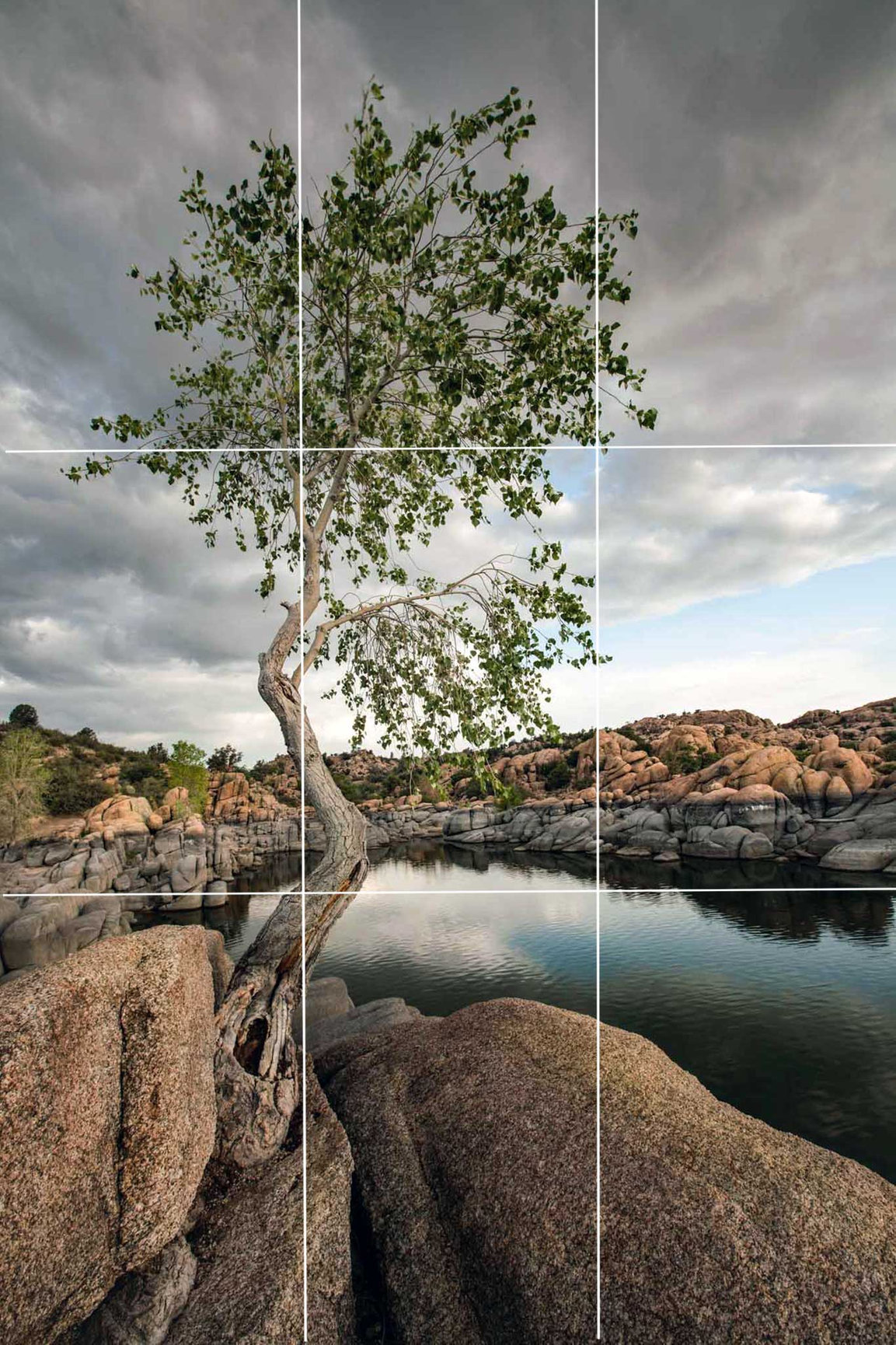This is the second in a series of articles to help you create amazing photographic compositions.
Part A - What is Your Subject?
Part B - Place & Frame Your Subject
Part C - Find an Angle
Part D - Creating Depth
Part E - Balance Your Composition
Part F - Keep It Simple
Part G - Lighting in Your Composition
Part H - Break the Rules
Part I - Minimalism and Negative Space
Placing & Framing Your Subject - Composition 101B
Last month we discussed “What Is Your Subject” with an emphasis on actually identifying a subject rather than just shooting away. In this article we are going discuss options on where to place the subject in your composition.
Most of us are acquainted with the Rule of Thirds and the Golden Ratio (or Golden Rule). These are two similar concepts that help us in subject placement. The Rule of Thirds suggests that we place our subject at one of the intersections of the vertical thirds and horizontal thirds of the frame.
NOTE THAT YOU MUST CLICK ON EACH IMAGE TO SEE AN ENLARGED VIEW CORRECT LINE POSITIONS WITHOUT CROPPED EDGES!
The first illustration shows the frame divided into nine equal sections. The inside points of the darker rectangles mark the intersection of the vertical and horizontal thirds. Many cameras have the ability to view lines that mark the thirds of your composition in the viewfinder, a great help especially for amateur photographers. The inside points of the second illustration mark the intersection lines that follow the Golden Ratio which is approximately 0.62:1. The Golden Ratio (also called “phi”) was developed from ratios that are found in nature. For example, these ratios are found in the arcs of a nautilus shell, in proportions on flowers and in the human body such as in the proportions of the sections of the upper extremities. I am not aware of any cameras that allow you to set up the Golden Ratio lines in the viewfinder.
The reason the rule of thirds tends to work can be found in taking a look at the similar Golden Ratio. Nature and our eye are basically programmed to like the Golden Ratio which is very similar to the Rule of Thirds. In fact, we find more beauty in faces that have many proportions that match the Golden Ratio. Perhaps this can be explained more completely by knowing something about our DNA.
Research has shown:
The structure of canonical B-DNA converges to Φin the ratio of the length:width of one turn of the helix; in the spacing of the two helices; and in the axial arrangement of the atoms. This is unexpected and suggests the action of some external process. The determination of what this process might be remains to be found, but is central to any understanding of the origin of life.
Source: “DNA Structure and the Golden Ratio Revisited” SH Larsen Symmetry 2021, 13(10).
So the question is, “Which one should you use?” My suggestion is that either can work. But in a composition with a lot of other elements, I am more likely to place the subject according to the Rule of Thirds. This gives more room for the other elements. If have a subject that follows mostly vertical of horizontal lines, I am would prefer the Golden Ratio.
The next composition question is which one of those corners is best for the composition. Because we read left to right and because many of our subjects are not close up, the most comfortable location for a subject is in the upper right position (circled). But the best position is usually dictated by the other elements in your composition. It may be preferable to place your subject in another location. Take a look at these examples to see the use of these rules in actual photos.
You will rarely find a composition that fits so closely to the rule of thirds. It this case it is horizontal. But the two lower corners are also at the edge of the sand action. In a later article about using light to direct the viewer's eye you will see that it is rare to have almost all black in the middle of an image and have the image work well.
For the most part, this image follows the rule of thirds, but it is not so obvious. The primary action (subject) is at the lower left intersection. Lesser centers of action are shown with smaller circles.
A somewhat more common position for the main subject is near the upper right intersection. Lesser subjects are shown with smaller circles.
This tree is placed at the left vertical third. Placing it in the middle of the image would have blocked the ability to get deeper into the image. As start looking at your compositions, you may discover that the main subject and lesser subjects work quite well when they are positioned near two or three of the intersecting lines. This often creates a triangular effect that is pleasing to us. But placing subjects at all four intersections causes disharmony and is not as pleasing to our eye. For this reason, family portrait photographers often place multiple subjects in a triangular composition
Framing the Subject
The purpose of a physical frame on the outside of a picture is to direct the viewer’s eye to the picture and then to help hold it there. Often picture frame can enhance the image by its color and design. Framing the picture within the composition is slightly different. It is helps direct and hold the viewer’s attention on the most important parts of the image, which often includes removing distractions on the outer areas of the image.
Common framing methods include the use of trees (or limbs), rock outcroppings, structures or other area without distracting details. Since eyes are directed toward light, having a darker areas on the outside areas of the image can also be used to frame the subject. Some “framing the subject” techniques can be accomplished in post processing, but achieving this framing in the composition stage will usually provide the better result.
Although Ansel Adams used vignettes extensively, I recommend keeping them to a minimum especially in skies. They seem less natural in color photography than in black and white photography.
The following images are some examples of framing with comments.
In the images above, the shoreline boulders provide a frame for the primary subjects...the lake, reflections, island and sky. Trees, building walls, and canyon walls are often employed as frames.
In this image, the aspen tree could be considered a subject, but it's main purpose is to frame the valley and mountain in the distance. Try to avoid frequent use of overhanging foliage to frame the top of the image as this is a bit trite. The darker foreground also provides framing and gets the viewer into the image more quickly.
The corners of the image on the left received very limited vignette treatment. A heavier hand can work with black and white images, but tends to be more upsetting when the vignette hides color as it does in the image on the right. Rather than use a vignette tool, try using a gradient to selectively darken just the corners it benefits.
Little if any vignette would be helpful to this image. Note that if you vignette all corners, you can end up with corners that are too dark. An improvement would be made by cropping off the right side of the image.
The viewer's eye may also be directed to the subject by selective focus, usually created by using wider apertures or longer lenses or both as was the case of the bees on the saguaro blossom. A similar effect can be created with lenses such as the Lensbaby or center focus filters. The image on the left had blurring applied to the outside areas in post processing with a selective Orton Effect where I chose not to apply the effect in the center areas of the image.
Next month we look at "Finding An Angle". This is a great way you will differentiate your photography from what most people shoot.





